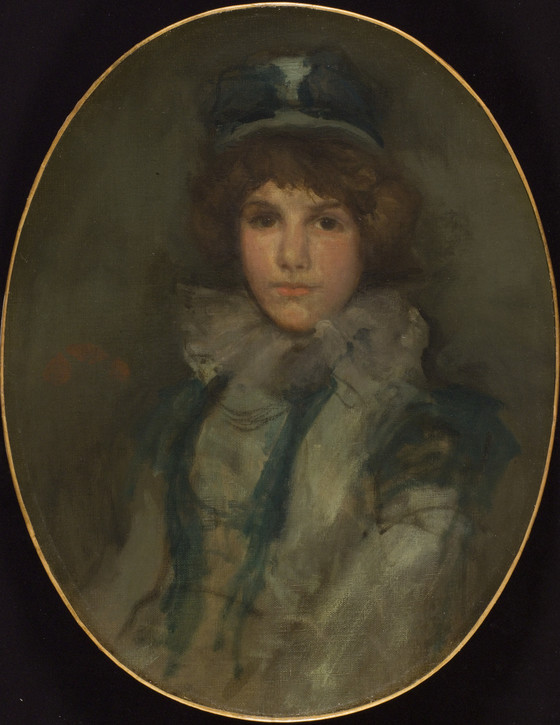Living an expatriate existence, James McNeil Whistler worked primarily in Europe, first in France, then in England....
Living an expatriate existence, James McNeil Whistler worked primarily in Europe, first in France, then in England. Yet, he was the single most influential American artist of the nineteenth century, not only in Europe, but also in the United States. His achievement lies at the heart of the late nineteenth-century Aesthetic movement, which prized the idea of "art for art's sake." His argument that art is neither didactic nor natural was a necessary prelude for the development of the radical modernist movements of the twentieth century, primarily abstraction. No American artist of any stature after the Civil War escaped his influence.
Whether landscapes, seascapes, or figure studies, Whistler's paintings are marked by his attention to the visual effects of the surface, in particular, by great variations in glazing and texture. The subject matter is often secondary, a point that he calls attention to by titling the paintings with musical terms (Nocturnes) or abstract color phrases (most famously, the portrait of his mother is Arrangement in Grey and Black). The majority of his subjects are women, elements of an ongoing investigation of what constituted the concept of the "beautiful." While many were commissioned portraits, Whistler also used young working class women selected for the pictorial effect, in what the eighteenth century called "fancy pictures."
Blue and Coral: The Little Blue Bonnet is a fancy picture from the end of Whistler's career and represents his mature style. It is the largest of his oval portraits and is one of his most finished works from this period. Whistler was an experimental artist even late in life. Many of his paintings were executed thinly, in glazes, as in The Little Bonnet. The costume is deliberately sketchy — the sitter's body and hat are depicted for their colors rather than for any accuracy of detail. Her face, on the other hand, is quite fully rendered and emerges out of the dark tones of the picture with great delicacy. This balance of the human interest of the subject and the purely abstract effects of tone and texture is the hallmark of Whistler's most successful portraits. Whistler is also represented in the museum by over 150 of his famous etchings and lithographs. View more works by Whistler in LACMA's collection.
More...



